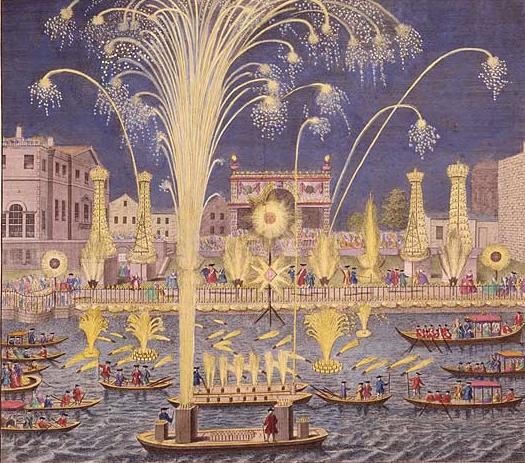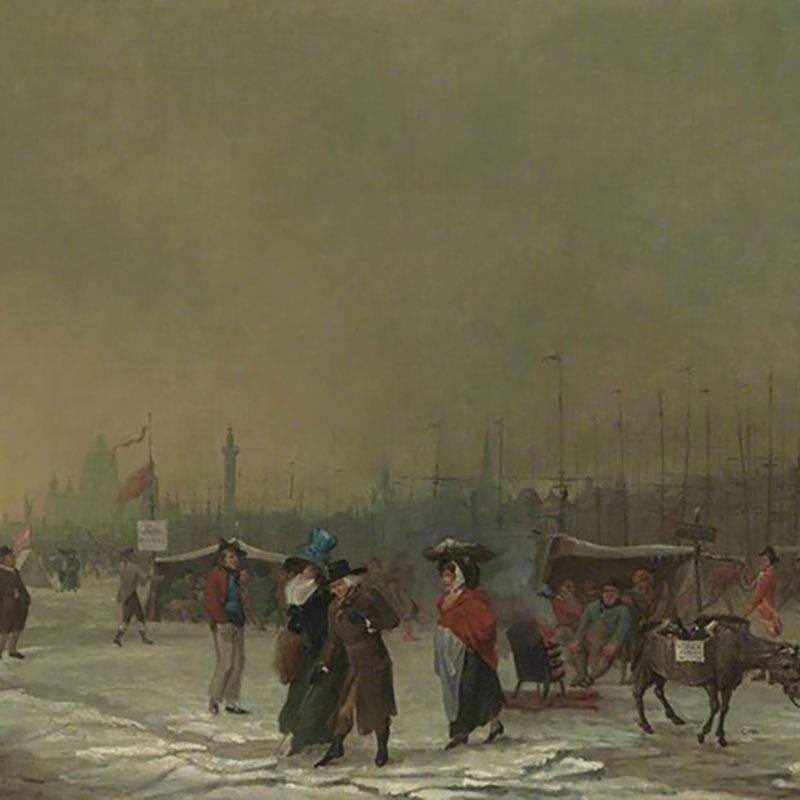12 Days of Georgian Christmas

‘tis the season, and Christmas is all around us. It surrounds us at the present, it stretches out in the future Decembers before us and it lays behind us in all the many Christmases that have gone before. It is well-known that Christmas is a centuries-old tradition and it is a is a very tradition-bound time of year. You may, for this very reason, feel like introducing some new traditions into your yearly celebrations. If you do, here below are some traditions of the people of the Georgian era, the era into which Jane Austen was born and lived, to make up the traditional twelve day Christmas period. I have chosen twelve Georgian traditions that may make you curious, make you feel connected to the Christmases of the past or perhaps even inspire you to introduce a few of these into your own Christmas season; traditions both new and old at the same time.

1. Give to Charity
Traditionally the 26th of December, Boxing Day, was the day of gift giving. The day was known as Saint Stephen’s day, named for the saint who was known to have done great deeds on behalf of the poor. On this day, it was tradition for those more well-off to give away gifts of food, goods and/or money presents to the poor and their servants. These presents would be presented as ‘Christmas boxes’. This resulted in the day later being known as boxing day.
2. Burn a Yule Log
On a Christmas Eve, a log would be chosen and taken home. It would be wrapped up in twigs gathered outside and put onto the fire to provide warmth for hopefully as much of the Christmas season as possible. Though it may be a very dear wish to though less well off it may have been more of simply a cosy, festive tradition to others. If it sounds like a tradition you would like to
partake it, but perhaps have no readily available fireplace to use, you might simply settle for enjoying the chocolate version of the yule log of an evening (though I hesitate to use the words ‘settle’ and ‘chocolate’ in the same sentence.)
3. Bob for Apples
This one might be a familiar party-game to many, and it was no less familiar to the Georgians. Many played this game during the Christmas period for sport and shared fun between families, friends and neighbours. So get out your buckets and barrels, run up your water-bill, throw in your choicest apples and then your face, if you wish to bob like the Georgians did.
4. Deck the Halls with Green Things (Except (Perhaps) Mistletoe)
Famously, the Christmas tree did not become a commonly used image of Christmas nor a general fixture in the living spaces of those celebrating the holiday before the Victorian period. The Christmas tree was brought to England by the German wife of George III, and later popularized by Queen Victoria and her husband prince Albert, as they were pictured with one on Christmas with their family. This does not mean that the people of the preceding eras did not decorate their houses at Christmas with greenery. Evergreens and holly was traditionally brought into the home, and used for decoration on Christmas Eve, by the gentry and working classes alike. The mistletoe, though traditional even at this time, would however often be omitted in more traditional households, no doubt due to the ‘frivolous’, ‘immodest’ activities it would inspire.

5. Oh, and Deck the Halls with Fruit Too, Apparently
Aside from the holly and evergreens, Georgian people would also decorate their houses with fruit, such as apples and oranges (if they could afford it) Moreover some would use spices and ribbons to help create a festive atmosphere in the home. The smell of the fresh greens along with the spices and fruits, would create a fresh and fragrant scent as well as a festive look to the home.
6. Eat Like a Georgian
Like their Christmas-celebrating descendants, the Georgians held the food to be an essential part of the holidays. You might enjoy knowing you are upholding Georgian tradition when you eat a slice of turkey or goose, or enjoying a minced pie. These foods were very popular during the period. If you would like to live it up Georgian-gentility style this Christmas, you might give a bite of venison a try. If roasts and meat in general is not your thing, perhaps have a nibble on some of your Georgian fruit decorations or try a traditional Georgian Christmas cake.
7. Have a Cake and Live as Royalty
The Georgians had a tradition of making a Christmas cake and, at the same time, give a couple of Christmas guests the title of king and queen; roles they would act out during the festivities. Earlier in the period, the role of king and queen would be given to those who found a dried bean or pea in their slice. Later, several other ‘roles’ or ‘characters’ were given out based on the drawings drawn from a hat.
8. Toast the King Across the Water
During the Georgian period, there was a lot of religious division between Protestants and Catholics. One particular point of contention was the issue of the Hanoverian occupation of the British throne. In order to maintain a protestant monarchy, the childless Queen Anne, when she had to appoint her successor, looked to a distant German branch of her family tree, passing over several of her nearer relations due to the fact that they were Catholic. This, of course, enraged several of her Catholic subjects, some of who began campaigning for the deposing of the Hanoverians and re-instating of a Stuart monarch. The true monarchs, they believed, was James Stuart (and later, his son) who was in exile in Europe. In this vein, many of the Stuart supporters took the opportunity as Christmas time to have a drink and make a toast in the name of the ‘true king across the water’.
9. Wassail bowl
To go along with your Georgian meats or cakes, or to toast the king of your choice, you might try a traditional drink from a wassail bowl. The wassail bowl was much like a punch bowl containing wine or other spirits, sweetened and spiced, and served with apples for family, friends and other potential guests to enjoy. There are several recipes available online, as well as further information on the tradition to read. I highly recommend you read about the old welsh tradition of wassailing, which may be a forbearer to the tradition of Christmas carolling.
10. Kissing Under the Bough
Part of the decoration, was the so-called kissing bough. This was often a wreath or a ball made from the intertwining of twigs, mistletoe, holly and other seasonal plants. The kissing bough was the part of decorations that was often decorated with fruits as well as candles. It was then hung from the ceiling within the house. This may be a creative and novel alternative to the tradition of the mistletoe. The kissing bough performed much the same function, as the mistletoe is known for today, when it was used by the Georgians.
11. Take Your Plough to Church
While this one may seem a little too outlandish an activity to most readers, this was apparently a Georgian tradition for many of the landed workers. They would take their plough to church during the Christmas season in order to have it blessed by God for the coming year and thus hopefully ensuring good harvest in future. Perhaps you have no plough of your own and therefore no reason to have it blessed, but you may find some way to perform a similar ritual or your own invention or simply contemplate this curious, historical holiday fact.
12. Have A Bonfire
Once the twelve days of Christmas is over, however, the Christmas decorations had to be taken down and burned. There were those who held the superstition that it was bad luck to keep up the greenery with which they had decorated their homes after the conclusion of Christmas on twelfth night.
(I should, however, urge everyone, if they feel inspired to do something like this, to be very safe and take all appropriate cautions; not to burn their holly over a candle in their apartment. Whatever superstitions may suppose, doing so would sure have worse consequences)

Towards the end of the Georgian period, edging into the Victorian period, the tradition of the twelve day Christmas, stretching from the 24th of December to the 6th of January, was coming to an end. The industrial age was approaching and workers could not be spared to take twelve days off. The holidays were shortened to only include a few chosen days out of the period. Many farmers as well as others of the working classes would most likely have felt relieved by this change, being released from the church’s demand that people give up work for the period for religious reasons. Aside from this, Christmas stood to be subject to many changes in the coming times. However much Christmas may have changed over the past two- to three hundred years, I believe the traditions listed above echo a time-less festivity the spirit of which is easily recognizable in the present day.




Leave a comment
This site is protected by hCaptcha and the hCaptcha Privacy Policy and Terms of Service apply.